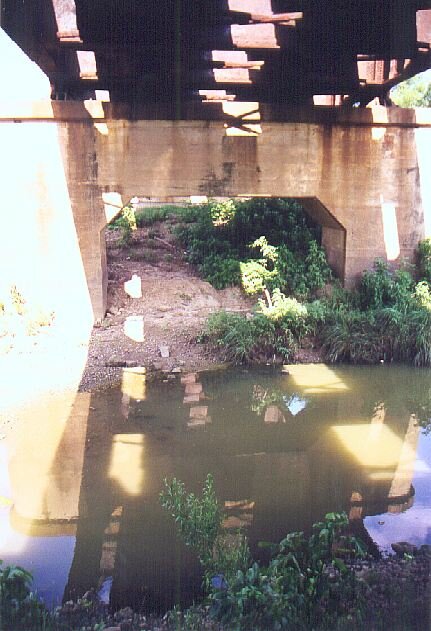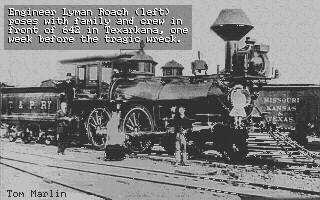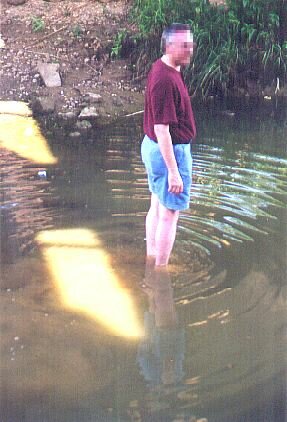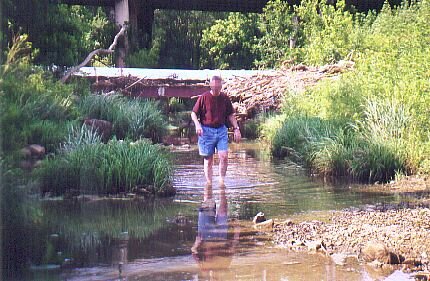|
In 1998, while doing a search-engine look for the term 'quicksand' on the Internet, I came across a web page put up by The Ft. Worth Star-Telegram. The web page really wasn't an online article so much as a series of 4 pictures with explanatory captions, put up 2 years earlier. Apparently, the entire article had appeared in the print edition of the paper, which I didn't have a copy of. However, the web page captions told enough of a story to get me quite interested in this place.
Apparently, in 1884 a Texas & Pacific engine, No. 642, derailed and plunged into Village Creek, where it was swallowed up in mud and/or quicksand! Of course, this really got my curiosity up. It must have been fantastically deep to swallow up someting that big! Was the mire still there? Would there be any trace of the engine remaining? And, just where the heck is Handley, anyway?
I had never heard of Handley, so I downloaded the page and pictures for future reference. From time to time, I would tell friends about the story, and inevitably people would say: "Well, why don't you hunt it down? Is it close by?" I figured it was somewhere within a 100-mile radius of the Dallas/Ft. Worth Metroplex, but I was lax for several months about making an effort to find the spot.
|



